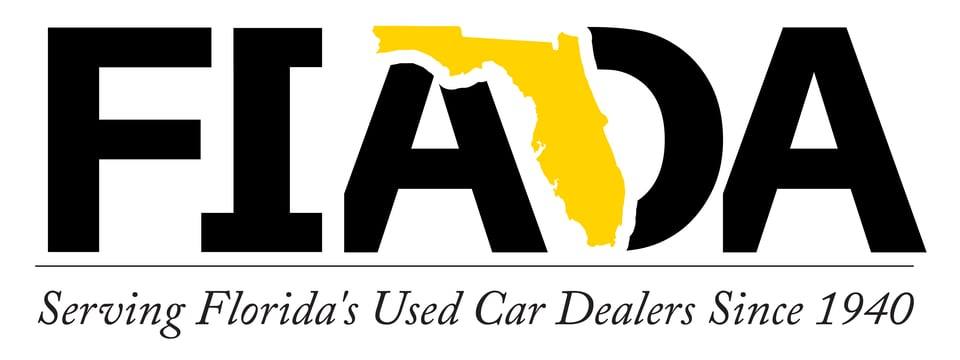Are you looking to expand your business in the alternative auto finance market? One way to achieve this is by buying auto loan portfolios. By purchasing existing loan contracts, you can quickly grow your loan portfolio and increase your revenue. In this comprehensive guide, we will explore the process of buying auto loan portfolios, including where to find them, how to evaluate them, and the way of becoming one of successful auto note buyers. So, let's dive in and discover how you can buy auto loan portfolios!
Key takeaways:
To buy auto loan portfolios, you generally need to connect with financial institutions or companies that originate auto loans and are looking to sell their portfolios. This typically involves negotiating a deal, conducting thorough due diligence to assess the portfolio's value and risk, and then finalizing the purchase through a legal contract.

Before delving into the process of buying auto loan portfolios or selling a car with a note, it's essential to understand the market and its dynamics. The auto loan portfolio market consists of loan contracts that are already in existence and being serviced by the current lender. These portfolios can include various types of loans, such as car loans, motorcycle loans, commercial trailer loans, and powersports vehicle loans.
Can you sell a car with a note? Yes, the prosess involves the sale of a vehicle that still has an outstanding loan. The transition of this debt forms part of an auto loan portfolio. Therefore, understanding the process of selling a car with a note can also provide valuable insights when considering the purchase of auto loan portfolios.
There are several advantages to acquiring existing auto loan portfolios:
Now that you understand the benefits of buying auto loan portfolios, the next step is to find portfolios available for purchase. Here are some common sources to explore:

Once you've identified potential auto loan portfolios for sale, it's crucial to evaluate them thoroughly. Evaluating a portfolio involves assessing its quality, profitability, and potential risks. Here are some key factors to consider during the evaluation process:
Examine the performance of the loans in the portfolio. Look for indicators such as:
Understand the composition of the auto loan portfolio, including:
Determine the fair price for the auto loan portfolio and assess its potential returns. Factors to consider include:
Once you have completed your evaluation and identified a desirable auto loan portfolio, it's time to initiate the negotiation stage of the purchase. This phase is crucial as it determines the value you'll get from the portfolio. Here are some key considerations during this stage:
The first step in the negotiation process is to determine the purchase price. This should be based on your evaluation of the portfolio's quality, potential returns, and associated risks. Consider factors such as the current loan balances, interest rates, and default rates. This will give you a clear picture of the value and potential profit the portfolio can offer.
Another key factor to discuss with the seller is the holding period and the release of funds. Some agreements may involve a holdback clause, where a portion of the purchase price is retained and released over a specified period. This is usually subject to portfolio performance. Ensure that you understand the terms of the holdback and negotiate for terms that best suit your financial objectives.
A common concern when buying a loan portfolio is the possibility of the seller re-entering the auto lending business and becoming your direct competitor. To protect your interests, ensure that the seller agrees to sign non-competition agreements. This would prevent them from becoming a direct competitor in the foreseeable future.
During the negotiation stage, it's also important to discuss risk mitigation strategies. These can include things like loan loss reserves, warranties on the underwriting practices used on the loans in the portfolio, and other factors that could potentially affect the profitability of the portfolio.
By taking these considerations into account, you can successfully negotiate the purchase of an auto loan portfolio and secure a profitable investment.

After reaching a successful agreement with the seller, the next step is to close the transaction and finalize the purchase of the auto loan portfolio. The closing process involves several crucial steps, each equally important:
Documentation and Due Diligence: The first step in the closing process is to prepare all the necessary documentation. This includes purchase agreements, loan contracts, and any legal documents as per the requirements of your jurisdiction. It's essential to conduct thorough due diligence to confirm the accuracy of all documentation, the legality of the transaction, and that all the terms agreed upon during negotiation are appropriately represented.
Transfer of Loan Servicing: After finalizing the documentation, it's time to coordinate with the seller for the transfer of loan servicing responsibilities. This entails transferring borrower information, payment records, and handling any outstanding collections or delinquencies. This transition should be handled carefully to maintain a good relationship with the borrowers and ensure the ongoing success of the loans.
Funding and Payment: The next step is to arrange for the funds necessary to complete the purchase. This typically involves a combination of cash on closing and any holdbacks agreed upon during the negotiation stage. Timely payment to the seller is vital to finalize the transaction smoothly and maintain a positive business relationship.
Portfolio Integration: The last, but a very important step, is integrating the purchased auto loan portfolio into your existing loan management system. This requires updating borrower records, payment schedules, and setting up necessary reporting mechanisms. The successful integration ensures seamless servicing moving forward, and it's important to involve your operations team in this process to help maintain the portfolio's quality and performance.
Post-Purchase Monitoring: After completing the purchase, it's essential to monitor the performance of the portfolio regularly. This will help you track its profitability, identify potential issues early, and make necessary adjustments to your servicing or collection practices. Having a robust monitoring system in place can maximize the return on your investment.
Adding auto loan portfolios to your business can bring numerous advantages. Here are some key benefits:
Portfolio Expansion: Buying auto loan portfolios allows you to rapidly expand your loan portfolio, providing a foundation for future growth and increased revenue.
Diversification: By acquiring portfolios with a variety of loan types and borrower profiles, you can diversify your risk and revenue streams, reducing your dependence on a single loan category.
Established Cash Flow: Purchasing performing loan contracts means immediate access to a steady stream of cash flow from borrower payments, providing stability and predictability for your business.
Reduced Origination Efforts: Buying existing loan portfolios eliminates the need for extensive marketing and loan origination efforts. Instead, you can focus on servicing and optimizing the acquired portfolios.

Buying auto loan portfolios can be a strategic move for lenders in the alternative auto finance market. Evaluating, negotiating, and closing the purchase of loan portfolios enables lenders to rapidly expand their portfolios, diversify their risk, and establish a steady cash flow. Conversely, those who sell auto notes can benefit by freeing up capital and reducing risk exposure. Remember, whether you're buying or looking to sell auto notes, it's crucial to conduct thorough due diligence, assess loan performance, and negotiate fair terms to ensure a successful transaction.
With a solid understanding of the process, you can tap into the potential of buying auto loan portfolios or selling auto notes to drive your business forward. This exchange not only facilitates growth but also contributes to the dynamism and diversity of the alternative auto finance market.
So, are you ready to take the next step and explore the opportunities of buying auto loan portfolios or selling auto notes? Start researching potential portfolios, evaluate their quality, and negotiate favorable terms to grow your business in the alternative auto finance market.
Additional Information:


